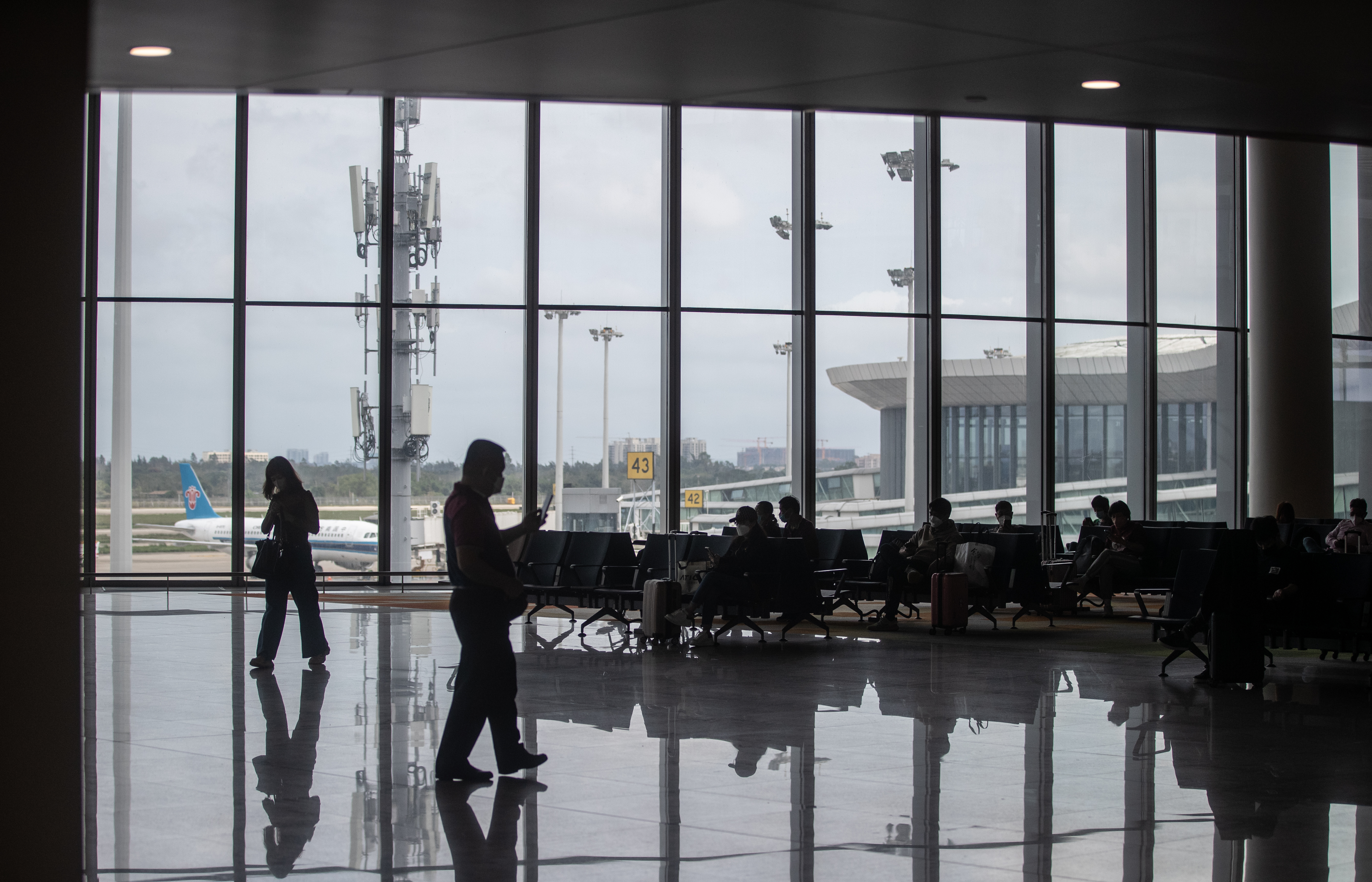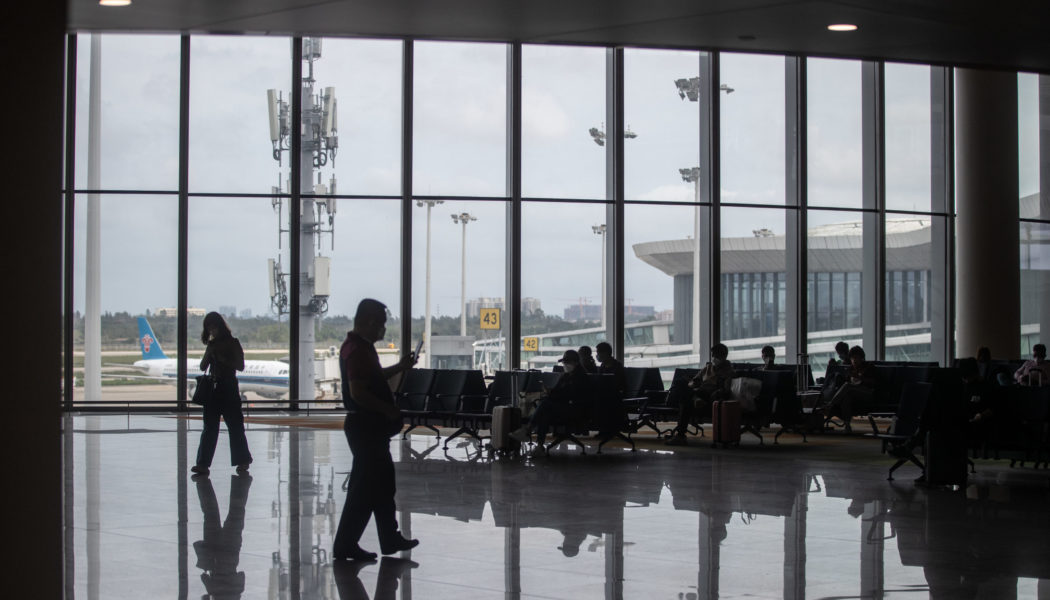
Nestled among the crumbling stupas of Laos’s ancient capital Luang Prabang, 525 Cocktails and Tapas was the city’s premier fine dining establishment, serving elevated local cuisine and perhaps Southeast Asia’s yummiest smoked negroni.
Foreign visitors comprised 95% of the restaurant’s footfall, and with tourist numbers to Laos breaking records year-on-year, plus a new high-speed train route due to link the landlocked nation with China’s city of Kunming to the north and Singapore to the south, business was looking up.
Then the pandemic struck. With borders sealed shut, 525’s British proprietor Andrew Sykes had no choice but to suspend operations, instead pivoting to local clientele by opening new premises in Laos’s modern capital, Vientiane. “The business is going very well,” says Sykes. “I will reopen in Luang Prabang but just not quite yet.”
Laos flung open its borders to visitors in May but the uptick in foreign arrivals has been torpid. Many in the hospitality industry hoped that would change following the opening of China’s borders on Jan. 8, given free-spending Chinese tourists comprised almost a quarter of the nation’s 4.7 million international visitors in 2019. Still, the results have been underwhelming.
“We’re starting to see Chinese customers come in, but it’s sub-10% of our business,” says Sykes. “It’s still predominantly Laos with some expats as well.”
Despite an indeterminate human toll, the sudden end of China’s zero-COVID policy is an undoubted boon for the global economy, liberating consumers and retailers of three years of supply chain disruptions wrought by arbitrarily shuttered ports and factories. The end of China’s pandemic travel restrictions is also a huge relief to the global hospitality industry. In 2019, Chinese travelers made 155 million trips overseas, spending $277 billion—a fifth of the global total outlay by international tourists.
But the experience of Laos, right on China’s southwestern frontier, shows that returning to the level of pre-pandemic travel will be a long, slow process.
Rebounding in Phases
The announcement on Dec. 26 that Chinese travelers could once again travel abroad naturally sparked optimism in a regional hospitality industry that has suffered greatly during the pandemic. Ctrip, China’s largest travel agency, reported that overseas bookings from Jan. 1 to Jan. 10 had increased by 313% year-on-year, with Singapore, Thailand, and Malaysia among the most popular destinations.
Still, overall traveler numbers remain a fraction of pre-pandemic numbers. Firstly, the abrupt and chaotic end of zero-COVID meant that airlines and travel agencies had little time to scale up capacity before a rush of interest, meaning flights were limited as costs soared.
More from TIME
“Lots of airports, airlines, travel partners let some of their staff go,” says Jane Sun, CEO of Ctrip. “So now they need to recruit the staff back and re-train them. But we’re hoping during the second half of the year, everything will be back to normal.”
When China announced that it would reopen its borders from Jan. 8, the focus internally was on preparing Hong Kong and Macau—two destinations within the People’s Republic but that due to their “semi-autonomous” status still count as “outbound” travel on tourist figures.
The second phase, which began on Feb. 6, included only 20 countries to where Chinese travelers could book tours and “package” (flight plus hotel) vacations: most Southeast Asian nations—including Laos—plus the UAE, Egypt, Kenya, South Africa, Russia, New Zealand, Fiji, Cuba, and Argentina. In Europe, only Switzerland and Hungary made the cut, while North America was completely shunned.
In any case, the abruptness of the January reopening meant that few Chinese wanted to travel abroad for Lunar New Year—instead choosing to spend it with families that they had been cut off from for the holiday over the past three years. The period immediately following Lunar New Year has never traditionally been a popular travel time in China, and so there’s unlikely to be any huge rebound until the summer at the earliest.
“October and towards the back end of this year is when you’ll start to see the real upswing,” says Gary Bowerman, director of Check-in Asia, a tourism intelligence and strategic marketing firm. “And by that time, you would think that the Chinese travel industry will have found its feet and be able to manage demand.”
Changes in Capacity and Demand
As the world’s largest travel industry, it will take some time for China to get back up to full capacity. A positive factor is that China’s domestic tourism is huge and permitted tour operators to pivot inward rather than suspend operations completely, as was the case in smaller countries.
Still, it’s unlikely that tourism from China will return in exactly the same shape as before. Currently, there just aren’t many flights. Travel data firm OAG suggests that capacity to and from China will swell from about 1.5 million seats in December 2022 to more than 4 million in April 2023. The Civil Aviation Administration of China (CAC) expects total air traffic for 2023 to reach 75% of pre-pandemic levels.
The CAC will soon post its new spring and summer flight schedules, which will show where demand is heading over the next few months. Every big airline is currently locked in negotiations, though China, as ever, will protect its own domestic carriers by handing them the pick of routes and timings.
In addition, political wrangling persists. China is the only country globally to reopen its borders in the midst of a huge COVID surge (in fact, its biggest on record). Some nations eager for tourism cash chose to backburner the public health implications. In Thailand, where 28% of all visitors in 2019 were from China, arrivals were welcomed by garlands and health kits handed out personally by a deputy prime minister.
However, many governments slapped new testing requirements or bans on Chinese arrivals, prompting Beijing to retaliate by suspending the issuance of short-term visas to their nationals, including from South Korea and Japan. Tourism flows will continue to be buffeted by such politically-charged pandemic headwinds.
The pandemic has also left its imprint on travel habits. Ctrip’s Sun says that today’s Chinese tourists are looking to book trips at short notice—mitigating possible pandemic disruption—but also travel in smaller groups, using more sustainable means, and in ways that they feel safe. “More and more customers really want to be very well protected when they’re traveling,” says Sun.
This is another reason why the U.S. might be last to feel the benefits of any rebound. As relations between Beijing and Washington spiral over myriad issues, anti-Asian hate crime and gun violence has been amplified on Chinese state media. Even before the pandemic, Trump-era trade tariffs and anti-China bombast contributed to just 2.9 million Chinese travelers visiting the U.S. in 2018, down from 3.2 million in 2017, according to U.S. National Travel and Tourism Office data. “Chinese tourists are incredibly risk averse,” says Bowerman. “They don’t want to be near anything that puts their own personal security in danger.”
Of course, given many Chinese study, work or have family in the U.S., a significant number will continue to shuttle across the Pacific. However, safety concerns and a high price point for American travel amid a slowing Chinese economy, plus onerous restrictions for Chinese nationals to get U.S. visas, means many will stay away. And they will be missed; in 2018, Chinese tourists in the U.S. each spent an average of $6,700 per trip—over 50% more than the typical traveler, according to industry body the U.S. Travel Association.
“The Chinese economy has been struggling so I think pricier destinations might find it a little bit more difficult,” says Bowerman. “Value will be a big factor over the next six to 12 months, for sure.”
- Putin Suspended the Last Remaining Nuclear Pact With the U.S. Here’s What Happens Now
- Exclusive: Inside a Controversial Startup’s Risky Attempt to Control Our Climate
- No More Mr. Nice Boss: Flexible Employers Were a Pandemic Blip
- How COVID-19 Changes the Heart
- The AI Arms Race Is Changing Everything
- An Entire Ukrainian Village Spent a Harrowing Month in Captivity in a School Basement
- Michelle Yeoh Has Always Been Criminally Underrated
- Why Rock Climbing Is Such a Good Workout
- The Parent Files: New York Governor Kathy Hochul on Being a ‘Good Enough’ Mom
- Credit Card Debt Just Hit An All-Time High. Here’s How You Can Pay It Down









